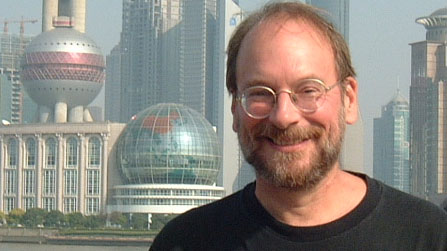
Let’s check out YouTube! Hey, this looks interesting: a video with the ominous title “The Plugin Scam Exposed. Did You Fall for It?” Uh-oh…that sounds scary…have I been a naïve fool all these years?
The video starts with “There’s a massive lie which you’ve been told by the audio industry, and I’m going to expose that right now in this video!” Spoiler alert: The basic premise is that companies who say EQs have different sonic “flavors” are scamming you. (To be fair, the presenter did say that linear-phase EQ is different, but that it’s mostly useful with high frequencies. Actually, the greatest amount of nonlinear EQ phase shift happens at low frequencies.)
To make his case, he set two different EQs to the same settings, and claimed they nulled. Well, they didn’t actually null completely, but we’ll overlook that. He concluded that “if you use one high-quality EQ properly, you don’t need to buy multiple EQs to get different flavors; this is just a scam from the audio industry plug-in developers trying to get you to buy more plug-ins from them… but don’t be fooled into thinking they actually sound different—they don’t.”
Hold that thought.
Had the title been “Do you really need 58 EQ plug-ins?” I would have given the guy a high-five. Some people have a plethora of plug-ins yet use only a few favorites. That’s fine. I think an intimate knowledge of a few plug-ins is better than a superficial knowledge of a zillion of them. And practically speaking, many EQs have what’s needed for most applications. But also, quite a few have unique features—so, what part of a “scam” or “massive lie” involves companies offering free trial versions so you can make up your own mind about whether you like something?
Craig Anderton’s Open Channel: A Perspective on Perspectives
To give him the benefit of the doubt, I duplicated the setup where he tried to null the Waves Scheps 73 with FabFilter’s Pro-Q 3. With EQ settings tweaked for maximum nulling, the combined level dropped by about -18 dB (peak) after flipping one out of phase. That’s enough to at least seem nulled when a YouTube video whizzes by.
But -18 dB is a low level, not an insignificant one. Furthermore, I tested other modeled hardware EQs with the FabFilter. Perhaps coincidentally, the Scheps 73 was the most similar. Other “vintage” EQs nulled to a lesser (sometimes far lesser) degree. The deepest null was around 37 dB, with the FabFilter Pro-Q 3 and Waves F6, but those are digital EQs that don’t emulate anything—they’re designed to be accurate and neutral, which they clearly are. (For what it’s worth, Waves’ vintage emulations don’t null with their F6 EQ.)
Of course, you can argue whether particular EQs sound sufficiently different to influence a production. The differences aren’t dramatic, but to extrapolate that into a scam perpetrated by greedy companies who think their customers are suckers is silly. It’s insulting to the companies, condescending to those who can consistently identify a difference, and denigrates the designers who’ve created emulations that are shockingly close to analog hardware. After doing my best to null vintage and digital EQs, there were still subtle differences between them. For example, with program material, the F6 had a slightly more present upper midrange compared to the PuigTec MEQ5 (maybe the transformer emulation?), while the Kramer HLS had a “deeper” bass character.
As to why EQs don’t all sound the same, one answer is obvious. The other is perhaps not as obvious, but arguably more important.
THE OBVIOUS DIFFERENCE
Different “analog” EQs model different hardware. Analog hardware didn’t use components with 0.001% tolerances or follow the same designs. Furthermore, EQs sometimes included inductors. These introduce sonic artifacts that some people find pleasing.
Consider UA’s Manley Massive Passive EQ emulation, which incorporates multiple design choices. These include saturation and the Miller effect from tubes, frequency band interdependencies, and transformer hysteresis. Sure, with enough digital EQ bands and time, you could probably replicate the band interdependency fairly closely, but it would be accurate for only one set of control positions—and you’d still need to emulate other qualities. I haven’t seen a plug-in called “What Manley’s Massive Passive Design Choices Add to a Sound” for giving other EQ plug-ins “that” sound.
THE PERHAPS LESS OBVIOUS DIFFERENCE
Analog hardware had a different workflow. Controls were often stepped instead of being continuously variable, and these stepped settings were based on the real-world experience of recording engineers. They didn’t choose EQ frequencies by throwing darts at a chart, but by selecting the frequencies they found most useful. Back when studio time was super-expensive, engineers who could nail a great sound quickly were in high demand. Nowadays, who would you rather work with—an engineer who uses a particular vintage EQ model because its stepped frequencies fit vocals like a glove, or someone who says “why don’t you catch a movie while I adjust this digital EQ’s 19 bands to try and emulate a curve that I could otherwise get in two clicks, and will require re-editing if you want to make even a slight frequency change?”
Seriously…there’s a reason why companies produce different types of EQs. Some people try them, like them, buy them, and use them for what they do best. Occam’s Razor makes more sense than conspiracy theories.







